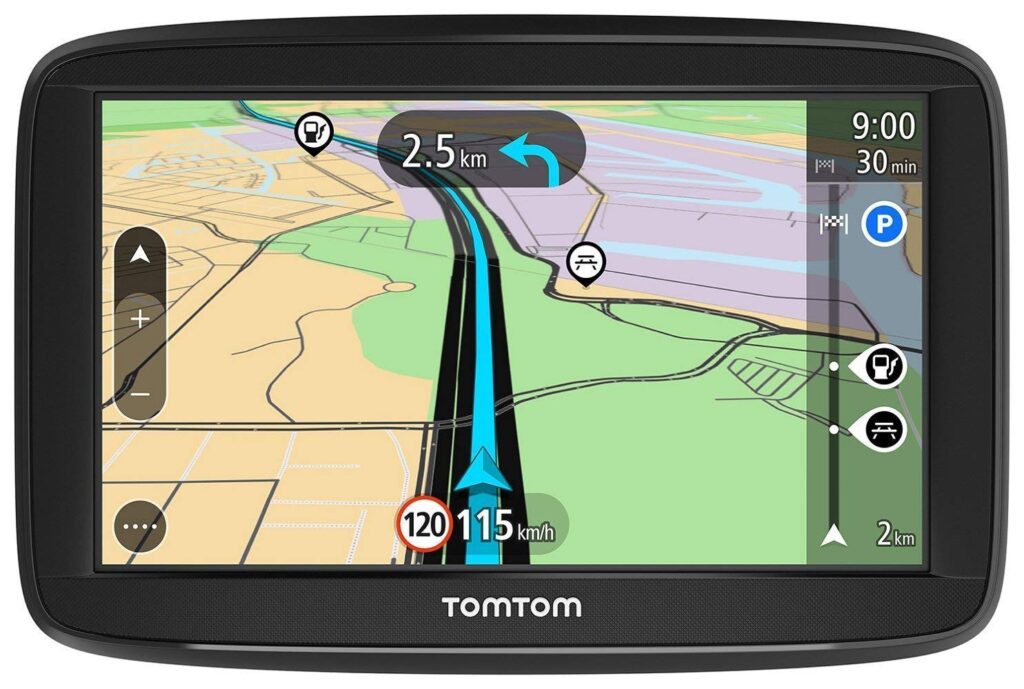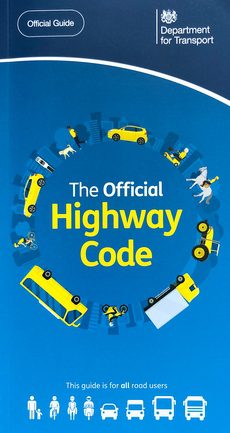
The independent driving section is a critical part of the practical driving test, where you will either follow road signs for around 20 minutes or be asked to follow directions from a Sat Nav. It’s important to be well-prepared for this to ensure success.
Understanding Independent Driving
The Basics
During your test, the independent driving portion will last about 20 minutes. This section aims to assess your ability to drive safely and follow directions with minimal input from the examiner.
Most candidates will use a Sat Nav during this part of the test, but it’s crucial to also be skilled at following road signs, as this could be required instead.
Sat Nav Use
For those using a Sat Nav, it’s vital to familiarise yourself with its operation before the test. Adjusting the volume without diverting your attention from the road is crucial.
The positioning of the Sat Nav, whether on the dashboard or the windscreen, will be arranged by the examiner to ensure the best visibility.
Remember, reliance on the Sat Nav should not lead to speeding; road signs are your primary guide for speed limits.
Direction Following
The examiner will provide you with directions in advance, but this is not a memory test. If you need a reminder, it’s perfectly acceptable to ask.
What’s important is demonstrating your ability to navigate to a given destination independently, using either the Sat Nav or following road signs as instructed.
Key Aspects of Independent Driving
- The examiner will set up the Sat Nav with the route; you don’t need to bring your own.
- You’re expected to follow the Sat Nav’s instructions but can ask for clarification if unsure of the destination.
- The use of the TomTom Start 52 is standard, and adjustments can be made for visibility and volume to suit individual needs.

Following Road Signs
- If not using a Sat Nav, you’ll need to follow road signs to a specified location.
- It’s essential to practice identifying and following these signs accurately before your test.
Handling Errors
- Mistakes during independent driving, like taking a wrong turn, will not automatically result in a fail, provided you handle them safely.
- The examiner can help redirect you if you go off course, whether you’re following a Sat Nav or road signs.
Tips for Success
- Practice: Familiarise yourself with both Sat Nav operation and road sign identification well before your test.
- Ask for Clarification: If you’re unsure about a direction, don’t hesitate to ask the examiner.
- Stay Calm: If you make a mistake, remain calm. The ability to safely correct a mistake is more important than perfection.
- Adjustments: Communicate any needs you have regarding the Sat Nav’s setup before the test to ensure it suits your preferences.
The introduction of the independent driving element to the UK practical driving test in October 2010, and its expansion in 2017, reflects the importance of the ability to navigate and make decisions independently on the road.
With proper preparation and a clear understanding of the expectations, you can navigate this part of the test confidently.
Enhancing Your Independent Driving Skills
Mastering independent driving is not only about passing your test but also about preparing for real-world driving scenarios.
Here are additional strategies to enhance your skills and confidence in independent driving.
- Get Comfortable: Spend time getting to know the features and settings of a Sat Nav. Practice adjusting settings like volume and display preferences while parked, so you’re not trying to figure these out while driving.
- Real-World Practice: Use a Sat Nav during your practice sessions. Try following a route set by your instructor or a family member to simulate test conditions.
- Speed Awareness: Remember, the Sat Nav might not always be up to date with current speed limits. Always look for and adhere to road signs for the most accurate speed information.
Learn more about driving with a sat sav
Improve Sign Recognition
- Study Sessions: Spend some time away from the car studying different road signs and their meanings. There are plenty of online resources and apps designed to help learner drivers.
- Observational Drives: Go for a drive with an experienced driver or instructor and call out the signs you see and what action you would take in response. This can help reinforce your knowledge and reaction times.
- Mock Tests: Ask your instructor to set up a mock test that focuses heavily on sign recognition and following instructions without the aid of a Sat Nav.

Learn your road signs by downloading The Highway Code PDF
Developing Spatial Awareness
- Anticipation: Work on anticipating the actions of other road users. This will help you make safer decisions when following directions under independent driving conditions.
- Route Planning: Look at a map before you drive somewhere new. Understanding the general layout of your destination can help you navigate more confidently, even if you miss a direction or instruction.
- Practice in Different Conditions: Try driving at different times of the day and in various weather conditions. This will prepare you for the unpredictability of real-world driving beyond the test.
Handling Nerves
- Breathing Techniques: Learn some breathing techniques to help manage stress and keep calm. Deep, controlled breathing can help reduce anxiety and improve focus.
- Positive Visualization: Imagine yourself driving confidently and completing your independent driving section without any issues. Positive visualization can be a powerful tool for overcoming nerves.
- Test Route Familiarisation: While you can’t predict the exact route, becoming familiar with the area around your test centre can help reduce anxiety. Knowing you’ve successfully navigated nearby roads before can boost your confidence.
On the Test Day
- Clarify Doubts: If the examiner gives you a direction and you’re unsure, ask them to repeat it. It’s better to be clear than to make a mistake due to misunderstanding.
- Remember It’s Okay to Make Minor Mistakes: Everyone makes mistakes. It’s how you deal with them that counts. A wrong turn taken safely may not affect your test result as much as panicking or making a hazardous move.
- Focus on Safety Over Perfection: The examiners are looking for safe, confident drivers, not perfection. Prioritize safe driving practices over trying to perform flawlessly.
By incorporating these tips into your preparation, you’ll not only be better equipped to handle the independent driving section of your test but also become a safer, more confident driver overall. Remember, the skills you develop now will serve you for a lifetime of driving.
Frequently asked questions
Independent driving is a section of the driving test where you must follow directions from a Sat Nav or road signs for about 20 minutes with minimal guidance from the examiner. It assesses your ability to navigate and drive safely without direct instructions.
No, taking a wrong turn during independent driving will not automatically result in a fail. The key is how safely you handle the situation. If you navigate back on course safely, it won’t count against you.
No, you do not need to bring your own Sat Nav. The examiner will provide a standard model, typically a TomTom Start 52, and set it up for you.
No, you must use the Sat Nav provided by the examiner to ensure fairness and standardisation across all tests.
If the Sat Nav malfunctions or gives incorrect directions, the examiner will assist you with manual directions to continue the test smoothly. It’s important to remain calm and follow the examiner’s instructions.
Practice by using a Sat Nav during your driving lessons to become comfortable with following directions. Additionally, practice identifying and following road signs. Mock tests focusing on independent driving can also be very helpful.
If you’re having trouble hearing the Sat Nav, inform the examiner. They can adjust the volume or repeat the instructions if necessary.
No, there are no specific routes. The independent driving section is designed to assess your ability to follow directions, whether through a Sat Nav or road signs, and safely navigate different road situations.
If you’re unsure about where to go, it’s okay to ask the examiner for clarification. Remember, the test assesses your driving safety, not your memory.
Yes, you can ask the examiner for directions if you’re unsure. However, try to follow the Sat Nav or road signs as much as possible. The examiner can clarify the destination but won’t give turn-by-turn directions during the independent driving section.


